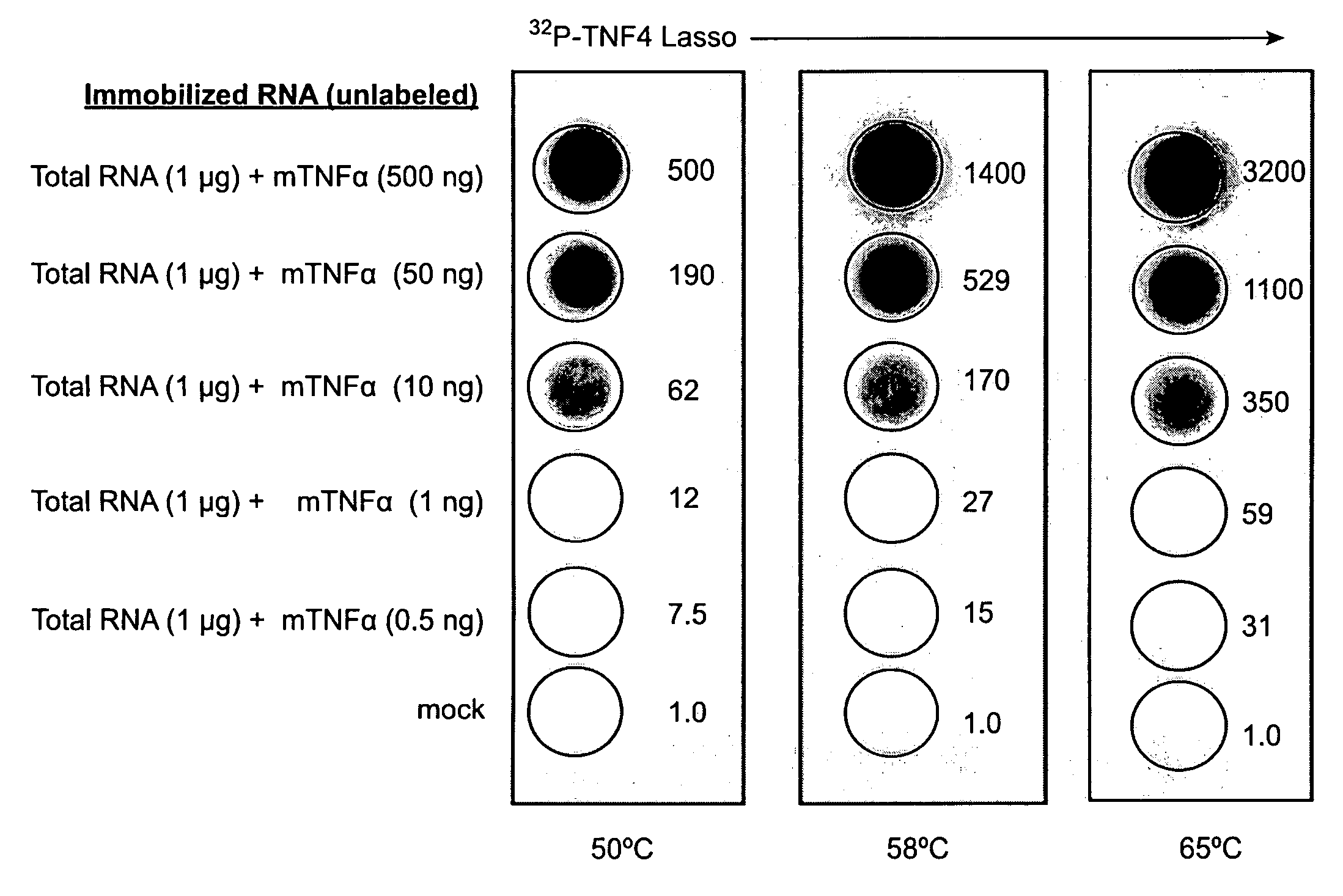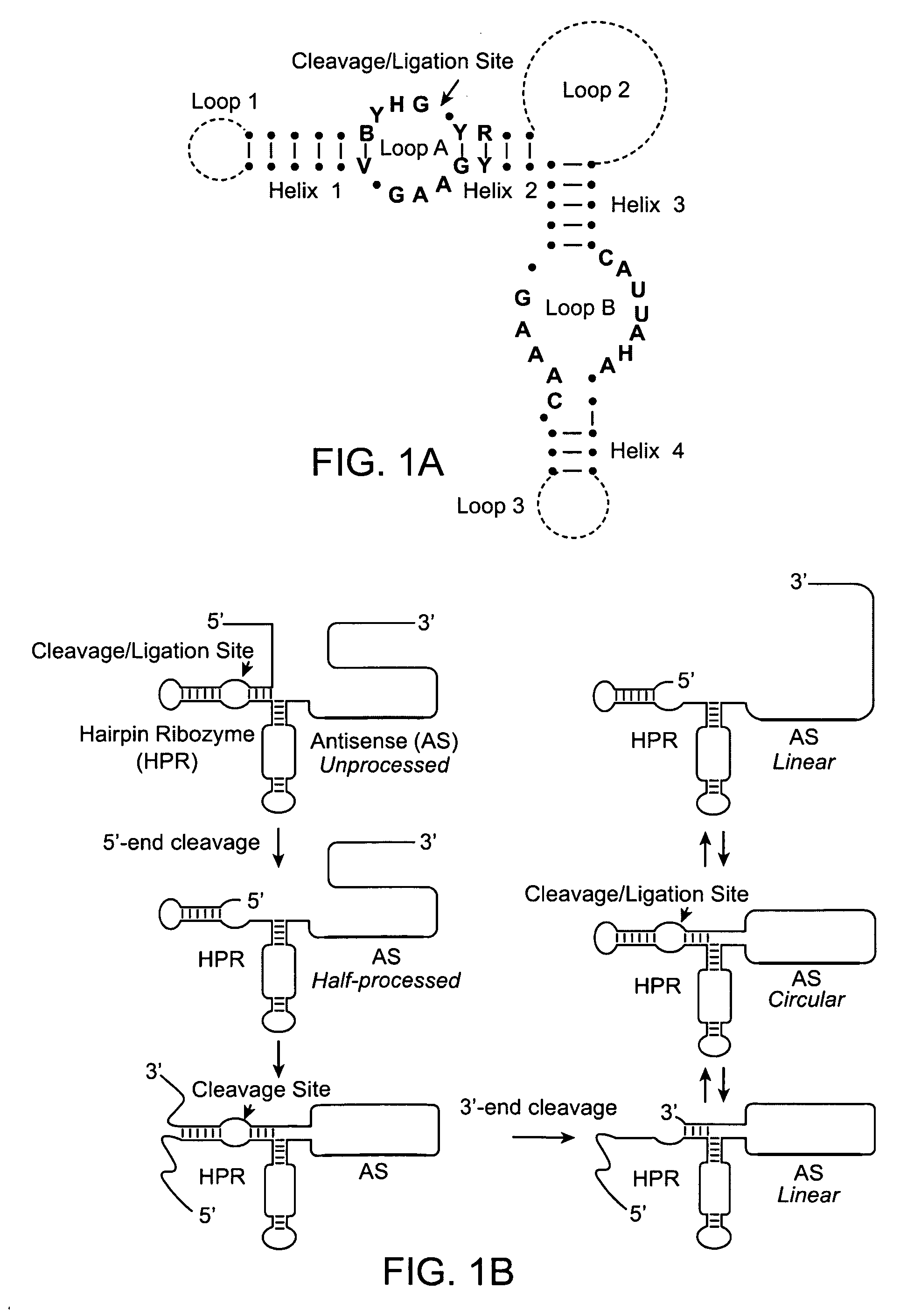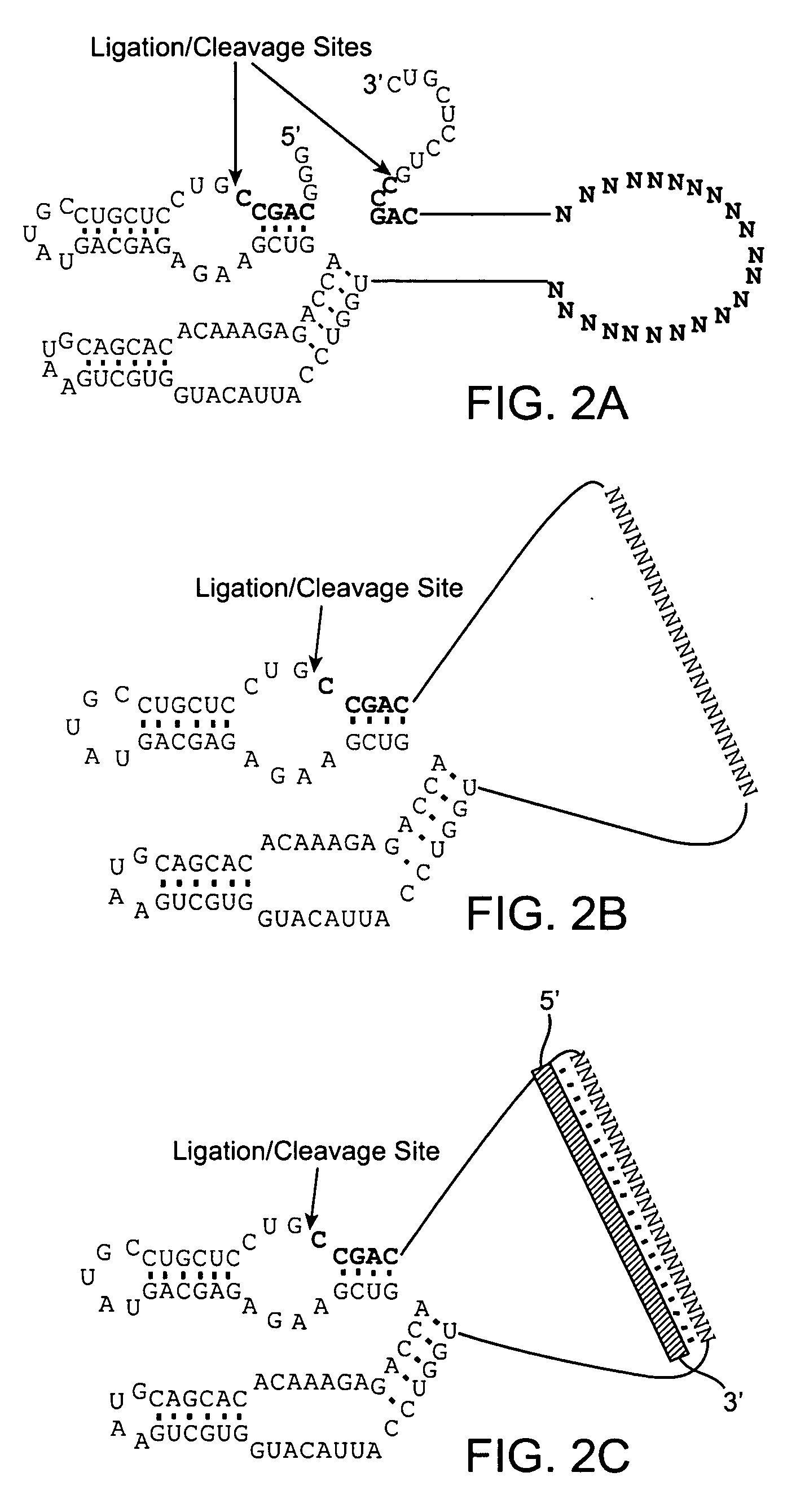Superior hybridization probes and methods for their use in detection of polynucleotide targets
a polynucleotide target and hybridization probe technology, applied in the field of new hybridization probes, can solve the problem of comparable preparation cost to ordinary rna probes
- Summary
- Abstract
- Description
- Claims
- Application Information
AI Technical Summary
Benefits of technology
Problems solved by technology
Method used
Image
Examples
example 1
RNA Lasso Probes
[0125]RNA Lasso™ are a proprietary class of RNA molecules developed by SomaGenics, Inc., that can hybridize to and circularize around polynucleotide targets (Johnston et al. 1998; Kazakov et al. 2004). RNA Lassos differ from DNA Padlock probes, which are another type of circularizable nucleic acid probe (see BACKGROUND AND RELATED ART). Lassos are 110-150 nt RNAs that can be transcribed in vitro and used without purification whereas the Padlock probes are 70-110 nt long chemically synthesized oligodeoxynucleotides that must be carefully purified to allow target-dependent ligation of their ends by a DNA ligase on the cDNA template. Since the topologically linked Padlock probes cannot be efficiently amplified by DNA polymerases, they must be displaced from the target or linearized by restriction enzyme cleavage assisted by oligodeoxynucleotide splint (Hardenbol et al. 2003). In contrast to DNA Padlock probes, RNA Lassos do not require protein enzymes for circularizatio...
example 2
Lasso Self-Processing, Circularization and Target Binding
[0128]An RNA Lasso, designated ATR1, targeting a site in the coding region of mouse tumor necrosis factor alpha (TNFα) mRNA (FIG. 4A), was transcribed from a DNA template by T7 RNA polymerase. Self-processing of the 133-nt primary transcript resulted in half- and fully-processed linear (L) species as well as the covalently closed circular (C) form (FIGS. 1B and 4C, lane 1). The relative electrophoretic mobilities of the L and C forms correspond to a known feature of RNA molecules: circular forms migrate in denaturing PAGE more slowly than do their linear counterparts (Feldstein & Bruening, 1993).
[0129]Binding of ATR1 transcripts with RNA targets has been tested in gel-shift assays. Both linear and circular species of ATR1 form with target RNA unusually strong complexes that are stable enough to be detected by denaturing PAGE (FIGS. 4B and 4C, lanes 2-3). In time course experiments, we have shown that Lasso hybridization with t...
example 3
Both Linear and Circular Lassos Efficiently Bind to Target RNA
[0130]32P-labeled ATR1 was incubated with excess TNF-709 target RNA, and products were analyzed by 6% denaturing PAGE. When Mg2+ was included in the incubation buffer, the circular and linear species could easily interconvert and both Lasso species were able to form a strong complex with target RNA, seen as two distinct Lasso-target complexes on the gel (FIG. 4C, lanes 1-2). In EDTA-containing buffer, lacking the Mg2+ required for HPR cleavage and ligation, the circular and linear forms could not interconvert, and only linear species were able to form the strong complex with target RNA (data not shown). These results indicate that the circular Lasso can reversibly cleave itself in the presence of Mg2+ before or after hybridizing to target RNA, and then ligate again when bound to target RNA.
[0131]High concentrations of monovalent cations (˜1 M and above) can substitute for divalent metal ions (M2+) in supporting the cataly...
PUM
| Property | Measurement | Unit |
|---|---|---|
| of time | aaaaa | aaaaa |
| diameter | aaaaa | aaaaa |
| pH | aaaaa | aaaaa |
Abstract
Description
Claims
Application Information
 Login to View More
Login to View More - R&D
- Intellectual Property
- Life Sciences
- Materials
- Tech Scout
- Unparalleled Data Quality
- Higher Quality Content
- 60% Fewer Hallucinations
Browse by: Latest US Patents, China's latest patents, Technical Efficacy Thesaurus, Application Domain, Technology Topic, Popular Technical Reports.
© 2025 PatSnap. All rights reserved.Legal|Privacy policy|Modern Slavery Act Transparency Statement|Sitemap|About US| Contact US: help@patsnap.com



